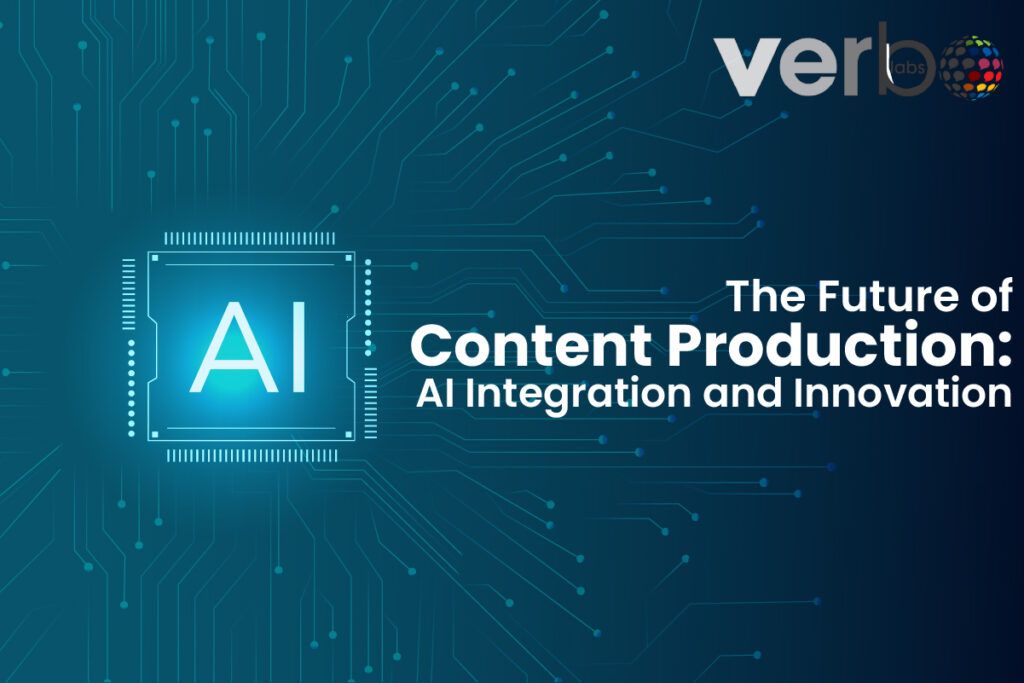Since the inception of the first computer in 1822 to 2023 where Artificial Intelligence can create content in a fraction of the time it would take any human to, technology has evolved for the better. The current fast-paced digital world is fuelled by content creation and consumption. With millions of articles, videos, and podcasts being created and shared every day, it can be overwhelming for content creators to keep up with the demand. This is where AI comes in as a powerful tool to help improve content productivity. From automating mundane tasks like research and fact-checking to providing valuable insights on user behaviour and content optimisation, AI content creation can significantly boost the efficiency and effectiveness of content creation. In this blog, we will explore various ways in which AI can be used as a pro tool to enhance content productivity and create more impactful and engaging content.
What is AI?
AI (Artificial Intelligence) is essentially the simulation of human intelligence in machines. AI has several benefits in various industries, including healthcare, finance, and even entertainment. In the realm of content creation, AI is used to optimise and create new content. For instance, AI can be used to analyse user data and determine the ideal time to publish content, improve SEO rankings, and personalise content for individual users. It can also be used to come up with new content like generating product descriptions or even writing entire news articles. The use of AI in content optimisation and creation has the potential to drastically improve productivity and efficiency.
How can AI be used to improve content productivity?
AI content creation is here to revolutionise content productivity completely. The algorithms can analyse data and identify trends to generate personalised content that resonates with niche audiences. All this smart work instead of hard work results in higher engagement, conversions, and overall ROI. Additionally, AI can optimise content for search engines, track analytics, and automate tedious tasks like scheduling and social media management, freeing up time for content creators to focus on more creative and strategic tasks. AI-powered content marketing can also help identify potential leads and automate personalised outreach, further expanding the client base.
Applications of AI in Content Production
It is no surprise that AI is a powerful tool. It can prove to be advantageous for content creators when it comes to generating ideas and optimising their content for search engine optimisation (SEO).
It rigorously yet effortlessly analyses existing content and identifies topics that haven’t been covered yet, allowing you to take lead. AI-powered content recommendation tools can suggest topics based on the interests of the audience, the trending topics, and even the current news. Essentially, it analyses user data and behaviour to identify what type of content users are looking for.
When it comes to optimising content for SEO, AI can help with tasks such as keyword research, topic modelling, and analysing competitors’ content. AI-powered tools can provide insights into the types of keywords that are most fruitful and suggest alternative phrases to target. AI can also analyse competitors’ content to identify what topics and keywords are working best for them.
Using AI for content strategy can greatly improve productivity by automating certain tasks. Social media posting and email marketing are two areas where AI can make a significant impact. With AI-powered tools, you can schedule social media posts and email campaigns in advance, freeing up time to focus on other equally important tasks. This means that you can create more effective content with less effort, and reach a wider audience in less time. By leveraging the power of AI, you can streamline your content strategy and achieve greater success.
AI-powered tools are also a game-changer for content producers. With the ability to refine the content creation process and increase productivity, these tools are becoming an essential part of almost every content producer’s arsenal. Creators can now focus on improving content productivity with AI while attending to other aspects of creating that need their attention.
There are various AI-powered tools available in the market that can help content producers, including but not limited to, content creation tools such as Copy.ai, ChatGPT and Articoolo, AI-powered writing assistants such as Grammarly, and SEO optimisation tools such as Clearscope. These tools use natural language processing and machine learning algorithms to enhance content creation, grammar, and optimise SEO. With the power of these tools by their side, content producers can produce high-quality content faster, making their jobs much more efficient and stress-free.
Best Practices for Using AI in Content Production
While AI can be a powerful tool for improving content productivity, it’s important to be aware of the potential drawbacks of relying too heavily on it. One of the major concerns is that AI can sometimes generate content that lacks the human touch, leading to a robotic or formulaic feel. Additionally, relying solely on AI-generated content can limit creativity and originality, as well as overlook important nuances that a human writer would be able to pick up on. It’s important to strike a balance between wisely utilising AI to streamline certain tasks and incorporating human creativity and expertise to produce truly high-quality content.
Integrating AI into your workflow can greatly improve your content productivity, but it requires a strategic approach to be effective. Here are some tips on how to effectively integrate AI into your workflow:
- Identify the areas where AI can be most useful
- Select the right AI tools
- Train your AI tools
- Observe the results
- Recognise the areas where AI can be the most beneficial: Analyse your workflow to identify the areas where AI can be most helpful. This may include tasks like content creation, data analysis, content curation, and social media management.
- Select the right AI tools: There are many AI tools available in the market, so it’s important to choose the right ones for your needs. Consider factors like convenience, compatibility with your existing tools, and its cost.
- Train your AI tools: AI tools need to be trained to understand your preferences and style. This may require providing regular feedback and guidance to the tool as it learns.
- Observe the results: AI tools can help you save time and increase efficiency, but it’s important to monitor the results to ensure that they are accurate and align with your goals.
AI can undoubtedly enhance content productivity, but it’s essential to maintain a balance between AI-driven optimisation and human creativity. While AI can help with keyword research, content ideation, and grammar checks, it’s crucial to remember that it’s not a substitute for human creativity. The human touch can bring a unique perspective, emotion, and storytelling to content that AI cannot replicate. Therefore, it’s vital to strike a balance between AI-driven optimisation and human creativity to create content that resonates with the audience and stands out from the competition.
Conclusion
AI is undoubtedly an extremely powerful tool that can significantly boost the efficiency and effectiveness of content creation, from automating mundane tasks to providing valuable insights on content optimization. However, it’s important to strike a fine balance between using AI and incorporating human creativity and expertise to produce nuanced content. By using AI for content strategy, selecting the right AI tools, training them, and monitoring the results, content creators can streamline their workflow and achieve greater success.



